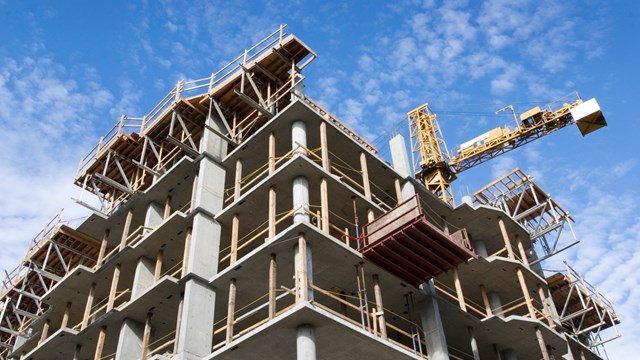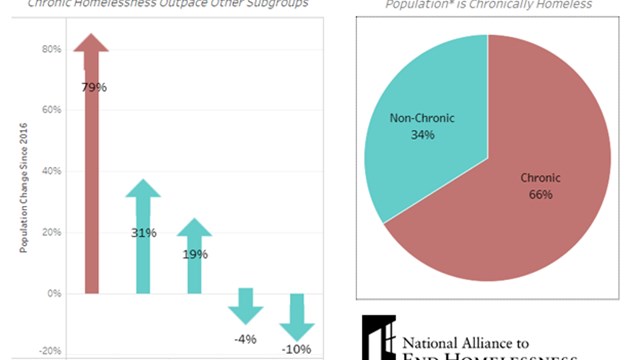Here in the land of birdfeeder-sized apartments (otherwise known as New York City), people will do just about anything for more space. And while sordid tales of deception and skullduggery abound, there are some legitimate means of expanding your domestic sphere of influence, and merging two apartments into one "megapartment" is one way to do it. But how do you go about performing this sort of architectural surgery? What will my co-op board have to say about it? What will this do to your property values, shares, and maintenance fees? Well, fear not - included here is everything you wanted to know about merging apartments but were afraid to ask.
To Tie the Knot"¦or Not
Merging apartments can be quite a commitment. So the first few big questions you need to ask yourself are; is this worth it? Will I be staying in this apartment indefinitely? Might I wish to take a job in Uzbekistan next year? Will this neighborhood be under water by virtue of global warming and a 100-year flood? In all seriousness, however: although some unions are relatively easy, many require considerable expense, paperwork, and an extended period of construction work, during which your apartment may be uninhabitable. These are things to consider before you take the plunge.
Along with future concerns and the problem of displacement from your home, obviously you'll also want to make sure you have a workable budget. Decide first how much you're prepared to spend on the endeavor, and then estimate how much it will cost to complete it. Don't forget to include fees for architects, engineers, contractors, lawyers, the cost of any special building materials, increased maintenance fees, the costs of buying and maintaining any new amenities or structural features you're adding, and - of course - all the new furniture you'll need.
One of the biggest determining factors may be whether you can snag two side-by-side apartments versus vertically adjacent ones. Although duplexes certainly have their charms and a little bit of prestige, there are significant advantages to doing horizontal combinations, according to Craig Toomin, an architect for Manhattan's Cutsogeorge & Toomin Architects. "With horizontally adjacent apartments, you're basically just cutting a hole in the partition and building a doorway.
"But a duplex," says Toomin, "is a whole different animal. That's a major architectural alteration - you're puncturing the ceiling, and restructuring the beams that support it; you're installing stairs; you're working around plumbing, wires, and so forth," he explains. That means that with horizontals, you're far less likely to run up against structural problems and their attendant legal snags. And obviously, horizontal connections are much less expensive to perform. "It's a difference of thousands of dollars versus tens of thousands," says Toomin. Single-story projects also take a fraction of the time it takes to make a duplex - maybe as little as two weeks versus four to six months. And finally, it bears noting that a duplex sacrifices a significant portion of your space to the staircase. That said; there's no single, overriding reason you shouldn't go for a duplex if it's what you really want to do and the opportunity arises. Just make sure you know what you're getting into.
So, you've weighed the pros and cons, examined your budget, and secured a friend's couch to stay on while your place is torn up, and you've decided to get the show on the road. Now what? The first thing you need to know is that there are two authorities you'll have to get past - your co-op board, and the city. It's best to start with the board because, of course, if they veto your plans, it doesn't matter what the city says. So, the first order of business is to let the board know your wishes and find out if they permit mergers at all. Most boards do allow - even encourage - this sort of thing, but some don't. Find out before you go through too much trouble. If the board does allow apartment combinations, then hire an architect to do an existing condition plan and present you with a schematic and several sketches of what the final combination could look like. Once you've selected a final design, you will present it to the board in a formal proposal of your plans. Your board may consult its own architects or engineers to weigh in - and you may get shot down if they find structural difficulties in your plan. But if everything looks good, the next step is drawing up an official alteration agreement.
According to Marc Luxemburg, an attorney with Manhattan law firm of Snow Becker Krauss and the president of the Council of New York Cooperatives and Condominiums (CNYC), the alteration agreement is a legal document that sets parameters for what kind of work you're allowed to do and how you're allowed to do it. In essence, it's a permission note from your board. Generally, a board's lawyers will draw up the agreement. However, it's in your best interest to have your own attorney (and maybe your architect as well) look things over too, just to make sure that everything's mutually amenable. Beware that the board will likely maintain the right to stop your work dead in its tracks if its terms aren't met, so this shouldn't be taken lightly. You don't want to hit a glitch midway through renovations and have to quit with weeks invested - and nowhere to live.
Once you've got your alteration agreement hammered out with your board, it's time to deal with the city. Your architect will help file plans with the city and obtain the required permits and signatures. "[Your architect] will do the paperwork for you," says Toomin. "If it's a vertical combination, we also have to submit structural drawings. But I highly recommend hiring an expediter to help move the paperwork through," he advises. Expediters usually charge one or two thousand dollars for their services, Toomin says, and most architects have people they work with routinely, so you won't have to find one on your own from scratch.
After you get the city's approval, your architect should be able to help you assemble contractors, arrange for disposal of debris, and otherwise act as project manager. Then all that's left to do is get out of the way while the workers go to it. Some people attempt to live on the premises while construction is going on, but Toomin strongly advises against it. There will be noise, dust, fumes and other possibly dangerous conditions - especially for children or pets, not to mention workers barging around, brandishing power tools. It's a chaotic environment, so make sure to stash away valuables and breakables. And see to it that contractors cover up your floors and furniture with plenty of pads and tarps - even in rooms far from the site of construction - to protect against dust and foot traffic.
So you've got a good grasp of the process and protocols involved in expanding your apartment, but there are other nagging concerns. What about the financial after-effects and legal ramifications? How will this affect your taxes? What will it mean for property values in your building? What about shares and votes? What will it all boil down to in the end?
Happily, most of the answers are easy on the ears. All things considered, merging apartments makes good business sense. The biggest benefit is the enhancement of your property values. Due to the scarcity of large apartments in New York, your new apartment should be worth more than the sum of its parts. According to Luxemburg, combining two apartments (in New York, at least) generally raises the value of your apartment to more than both apartments would be a la carte. It's also good for the rest of the building. "Larger apartments add to the family nature of a building, which promotes stability. Co-ops don't want a lot of turnover, so this is generally seen as a good thing, something that adds to the aggregate value of the building," Luxemburg explains. Just don't overdo it and try for a quadruplex or something. "Nobody wants you building a McMansion in their building," cautions Luxemburg. "Then you get disparities in income, disparities in the standards people expect of the building, voting blocks, etc. That's uncomfortable for everyone."
Another possible benefit is getting more votes, and thus more influence in how your building is run. Of course, not all co-ops handle votes the same way. Al Pennisi, a senior partner at Pennisi Daniels & Norelli LLP and the president of the Federation of New York Housing Cooperatives and Condominiums (FNYHC), explains it like this: "Every board makes its own rules. Some give you a new lease and new shares, but some don't. Some co-ops allocate one vote per share; others give you one vote per apartment, regardless of size." You just have to check with your board to see what their policy is.
The next question is maintenance fees, which will be based on the shares allocated to the new combined space. According to Luxemburg, maintenance fees are usually the sum of both apartments' individual fees, plus a small increase. "The shareholder typically owns only what's inside the space - the walls and ceilings belong to the board. So as soon as you begin knocking out walls between apartments, you're actually eating into some of the board's property, and there's a maintenance increase to pay for it, but it's usually not very much," he says.
As for taxes, deductions in a co-op will be allocated proportionately to shares, so, as with maintenance, you may see some changes. If you have a condo, you'll be assigned a new tax lot number that accounts for both properties, says Pennisi. And the Certificate of Occupancy? Thankfully, it's unaffected - read: no paperwork - by mergers, unless you're creating an apartment with more than ten rooms. (Lucky you.) So, while there are definitely some hoops to jump through and a good bit of financial and procedural planning to puzzle out before the first sledgehammer hits the drywall between your apartments, the benefits to building your own mini-Xanadu should outweigh the effort it takes to get there. Now go knock down a wall.
Alteration Agreement
So, what kinds of restrictions and requirements are in a typical alteration agreement? Al Pennisi, a senior partner at Manhattan's Pennisi Daniels & Norelli LLP and the president of the Federation of the New York Housing Cooperatives and Condominiums (FNYHC), offers this helpful overview:
"¢ It may require a written plan, including schematics.
"¢ It may require licensed and insured contractors, plumbers, electricians, etc.
"¢ It may stipulate your board's right to have their own engineers and architects approve or veto plans.
"¢ It may regulate duration and hours of work - e.g., work can only happen during certain weekday hours, work must be complete by a certain date, etc.)
"¢ It may restrict noisy activities, such as jackhammering.
"¢ It may stipulate your responsibility to dispose properly of debris at your own expense.
"¢ It may stipulate your responsibility to restore apartments to former status if you sell the apartment - or require incoming buyers to pay for maintenance of any new structures you added.
"¢ It may include restrictions on interfering with building systems such as heating, plumbing, ventilation etc.
"¢ It may include restrictions on altering windows, hallways, exteriors etc.
"¢ It may maintain the board's right to terminate your work at any time.
"¢ It will probably include provisions that are in the city laws, like the (somewhat unfathomable) rule that you must remove one of the kitchens entirely, and either cap the plumbing fixtures, or use them for non-kitchen-related functions - like laundry machines. (Hint: figure out what you're going to do with this room before you start work.)






Comments
Leave a Comment